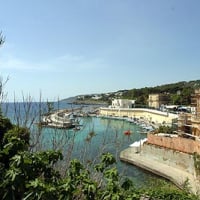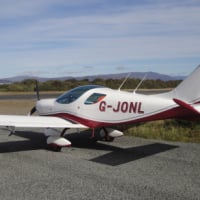Welcome to the FlexRadio Community! Please review the new Community Rules and other important new Community information on the Message Board.
Need the latest SmartSDR or 4O3A Genius Product Software?
SmartSDR v4.1.3 | SmartSDR v4.1.3 Release Notes
SmartSDR v3.10.15 | SmartSDR v3.10.15 Release Notes
The latest 4O3A Genius Product Software and Firmware
SmartSDR v4.1.3 | SmartSDR v4.1.3 Release Notes
SmartSDR v3.10.15 | SmartSDR v3.10.15 Release Notes
The latest 4O3A Genius Product Software and Firmware
If you are having a problem, please refer to the product documentation or check the Help Center for known solutions.
Need technical support from FlexRadio? It's as simple as Creating a HelpDesk ticket.
Need technical support from FlexRadio? It's as simple as Creating a HelpDesk ticket.
Arduino Library and examples
Comments
-
Enzo: Just wondering if the Arduino.cc WiFi Shield R3 would be equally compatible for these applications with a Due? Thanks!
73, Tom
K1FR0 -
Hello Tom,
wifi shield is currently retired is and will be replaced by Wifi-shield 101
I hope the new libraries will be fully compatible with the ethernet lib so we can simply switch the board an go.
73' Enzo
iw7dmh
0 -
Thanks, Enzo! Did not know about the new WiFi. Sounds interesting though. Am enjoying fooling around with Arduino stuff again.
73, Tom
K1FR
0 -
Another option is a wireless bridge. Most access points can be configured as a bridge, allowing ethernet devices to be plugged into the bridge device which then bridges all the ethernet packets to the main AP. I have a raspberry pi and Arduino Mega plugged into a wireless bridge. The pi is an ADS-B receiver and the Arduino is being used as my magnetic loop controller. All 3 have been sitting outside in a weather proof plastic box. I went this route because I didn't want to experiment with wifi on the Arduino and I got a free bridge device my ASUS RT-N66U router.
0 -
Yes Steve, it is.
Using a bridge is a straight solution to have an arduino boards connected to a network via wi-fi.
You can use a bridge also with our recent notebook. If you have windows 7 or more recent operating system you can configure a bridge with few clicks.
It is the way I can move my controller out of the shack.
Here are my notes about configuring a network bridge on Windows 7.
0 -
Hi Enzo and all you API developers out there. This is my first post to the forum, so be gentle with me

I'm a recent "convert" to the world of SDR - my 6500 arrived yesterday afternoon. My plan is to build a custom front panel as, being an old 'un, I can't deal with controlling a radio in contests and pileups solely via mouse clicks. I want tuning knobs and buttons and other things to twiddle!
So I was absolutely delighted to discover Enzo's excellent Flex library. It makes it really easy to rapidly develop a custom Flex control program. A couple of hours after first turning on the radio I had basic VFOA/B tuning working and was displaying frequency and S-meter data. Congratulations, Enzo, on a fine API library.
I already have a few questions regarding the API and, probably, Enzo's library implementation, Should I post these here, or would you prefer me to use e-mail, Enzo?
For example, this is nagging me:
When I use the API to tune onto a CW signal, I hear an irritating cracking sound that seem to be in step with the CW signal and the tuning. When I stop tuning the crackling stops. When there is no signal there is no crackling when I tune. This doesn't seem to happen when I use the mouse wheel to tune but I have noticed it when I click/drag the frequency rapidly across a bunch of CW signals. The effect is not (so) noticeable on SSB.
I'm wondering if this is an artefact of the radio, the API or (unlikely!) Enzo's library.
Right... back to programming my Adruino Due!
73, John, G3WGV
0 -
Hello John,
I just can say that my libraries, and each other Flex client, use the underlying ethernet connection, so it should be very difficult that the client itself can cause RF artifacts in your speakers.
I would suggest you to do a check of your wire connections, in particular the audio lines and, if needed, to try with RF blocking beads.
From the beginning I am using the very good Bose Companion speakers (suggested by Tim). They have shielded magnets and are totally free from RF interferences, and of course, have a gread audio response.
What speakers are you using?
I would also suggest to consider the incoming Maestro console that is a must-have device for ours rigs. It is actually a great add-on!
73' Enzo
iw7dmh
0 -
Hi Enzo,
Thanks for your comments.
I don't think it's anything to do with your libraries either. I put a dummy load on the Flex and I still hear the clicks, apparently randomly, as I tune. I am listening using headphones plugged directly into the 6500 front panel. So it's a bit of a mystery.
Am I right that the only way to tune the band is to send full frequency updates? There seems to be no step up/down by, say, 10Hz in the command API. That means that if I tune quickly I'm sending hundreds of full frequency QSYs to the radio each second as I tune up the band. I'm wondering if the 6500 is objecting to this, as I don't notice the clicks if I tune very slowly.
I saw the Maestro and it looks very nice but I like the idea of experimenting and building my own custom controller.
73, John, G3WGV
0 -
So enjoy with your test.
Sometimes it could be exiciting but sometimes it could be frustrating ...
BTW I can confirm there isn't ad +/- fixed band increment command, and you have to simulate it using your own code.
73' Enzo
iw7dmh
0 -
Apparently the Due from arduino.cc is now discontinued. Another effect of the split.
Any chance the libraries can work on arduino.org or the clone boards?
0 -
Hello Steve, I didn't tested any .org Due board, but it should be. I am sure, instead, that the Ethernet shield 2, from .org, is working very well with my libraries. Some friends are using it with success. I wouldn't bet a penny on clone boards because, up today, I had only bad experiences. 73 Enzo iw7dmh0
-
I'm using the .org Due and ethernet shield for another project. I couldn't find any .cc boards when I purchased them. So far I haven't had any issues with either one. It has been able to handle gpredict, serving a web page, and telnet sessions at the same time. It's probably not the same amount of traffic as the Flex API, but there is a lot going on with other sensors and such. Overall I've not had any issues that weren't of my own making.
I'll try to do some testing with the Flex libraries in the next couple weeks.
0
Leave a Comment
Categories
- All Categories
- 381 Community Topics
- 2.1K New Ideas
- 632 The Flea Market
- 8.3K Software
- 127 SmartSDR+
- 6.4K SmartSDR for Windows
- 185 SmartSDR for Maestro and M models
- 430 SmartSDR for Mac
- 272 SmartSDR for iOS
- 259 SmartSDR CAT
- 195 DAX
- 382 SmartSDR API
- 9.4K Radios and Accessories
- 40 Aurora
- 265 FLEX-8000 Signature Series
- 7.2K FLEX-6000 Signature Series
- 955 Maestro
- 56 FlexControl
- 866 FLEX Series (Legacy) Radios
- 927 Genius Products
- 464 Power Genius XL Amplifier
- 338 Tuner Genius XL
- 125 Antenna Genius
- 297 Shack Infrastructure
- 209 Networking
- 460 Remote Operation (SmartLink)
- 144 Contesting
- 788 Peripherals & Station Integration
- 140 Amateur Radio Interests
- 1K Third-Party Software

